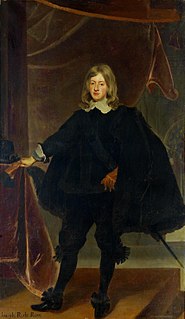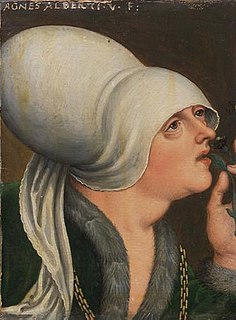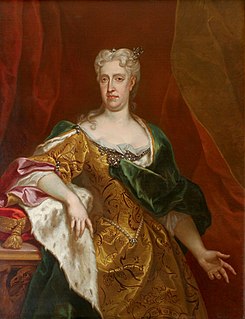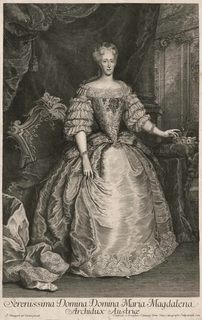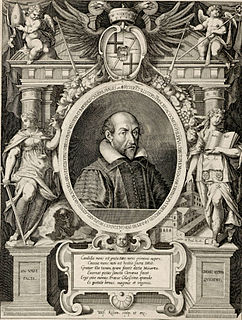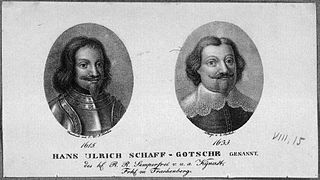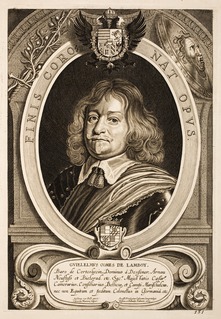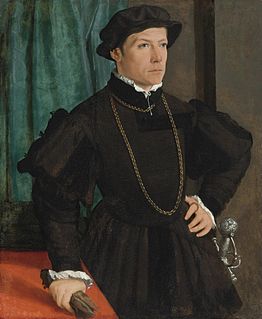Background

Albrecht von Wallenstein was born on 24 September 1584, into the noble Bohemian Waldstein family. On 28 August 1599, he enrolled into the University of Altdorf but was soon expelled due to his involvement in brawls. He spent the next couple of years traveling around Europe. In 1604, he enlisted as an ensign into the military of the Holy Roman Empire. He fought during the closing stage of the Long Turkish War, rising to the rank of colonel by the outbreak of Bocskai uprising during which he commanded a unit of Bohemian Estates militia. In 1607, he became the chamberlain of Ferdinand of Styria, future Ferdinand II, Holy Roman Emperor. In May 1609, he married Lucretia Vičkov, a widow of considerable means who died in 1614 granting Wallenstein her property. Wallenstein had previously secured his fortune by converting from the Protestant Unity of the Brethren denomination to Catholicism during the ongoing Recatholicazation campaign in Bohemia. [1]
At the outbreak of the 1618 Bohemian Revolt he demonstrated his loyalty to the crown by fighting his former coreligionists represented by the Bohemian Estates. A unit of cuirassiers whom he had recruited at his own expense fought at the decisive Battle of White Mountain which ended the revolt in the crown's favor. [1] In 1623, Wallenstein married Elizabeth von Harrach the daughter of Karl von Harrach an influential member of emperor Ferdinand's Geheimrat (Privy Council). Harrach's two other daughters married Adam Erdmann Trčka von Lípa and Wallenstein's cousin Max von Waldstein. [2] Wallenstein's newly acquired connections and riches enabled him to purchase vast estates formerly belonging to rebel barons, loan the emperor vast sums of money and raise thousands of troops. He campaigned extensively during the Thirty Years' War repelling incursions by the pretender to the Hungarian throne Gabriel Bethlen, defeating the Mansfeldian army in the Palatinate campaign of 1623. Those successes were followed by victories against the Danes between 1626 and 1628 which ended their intervention into the war. In February 1628, Wallenstein wrote off 4,750,000 florins of debt to the imperial treasury, in exchange he was elevated into an imperial prince and received the Duchy of Mecklenburg. While his army was now triple the size of that of the Catholic League, the empire's biggest ally. His meteoric rise to power was unprecedented in its scale became increasingly controversial among the members of the League who feared that their own possessions might be confiscated shall they disobey the emperor's command. [3]
In July 1630, the Catholic League used the opportunity of the Regensburg Electoral Congress to demand Wallenstein's dismissal. Wallenstein's reluctance to participate in the life of the court allowed his opponents to spread malicious rumors about him, such as his supposed ambitions to take the imperial throne for himself. Notably the Habsburg Spanish faction of the court was enraged at his failure to intervene into the Eighty Years' War. Bowing to outside pressure Ferdinand dismissed the general on 13 August. The Swedish intervention in the Thirty Years' War that took place on the same year swung the balance of power against the empire. Many still saw the former generalissimo as the only military commander capable of maintaining a balance among the opposing forces, his reinstatement was thus formalized on 13 April 1632. [4] Wallenstein spent most of the following year campaigning separately from his senior officers who operated autonomously, many of whom avoided him for fear of his rage outbursts. An axis of his opponents within the army began corresponding in encoded messages, criticizing his passive approach and the lack of opportunities for promotion stemming from it. Ferdinand found his responses to criticism inadequate and the two disagreed on the number of issues such as the unsanctioned release of the captured Protestant general Jindřich Matyáš Thurn and Wallenstein's refusal to conduct offensives during the winter months. [5]


